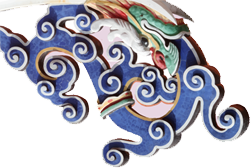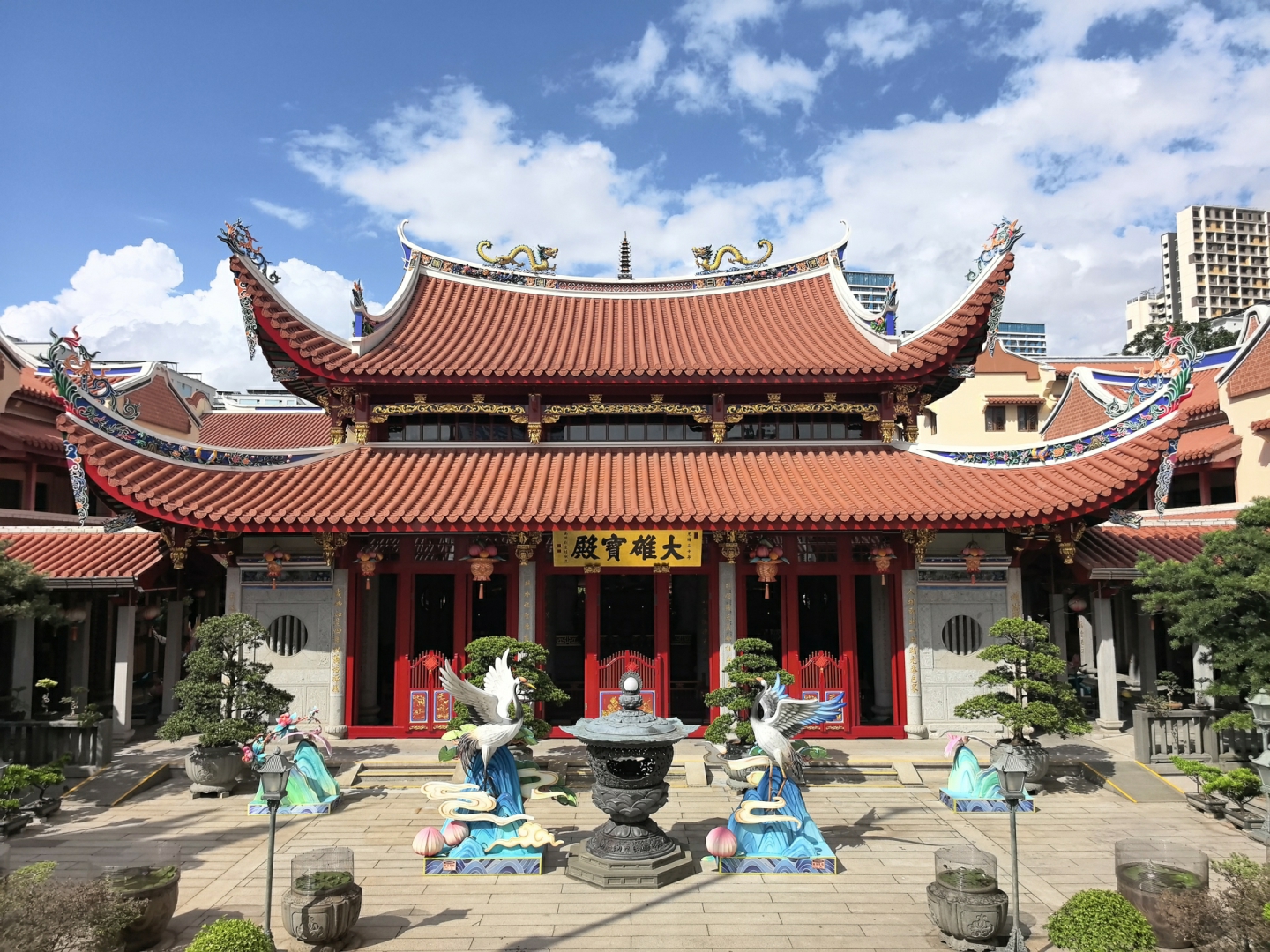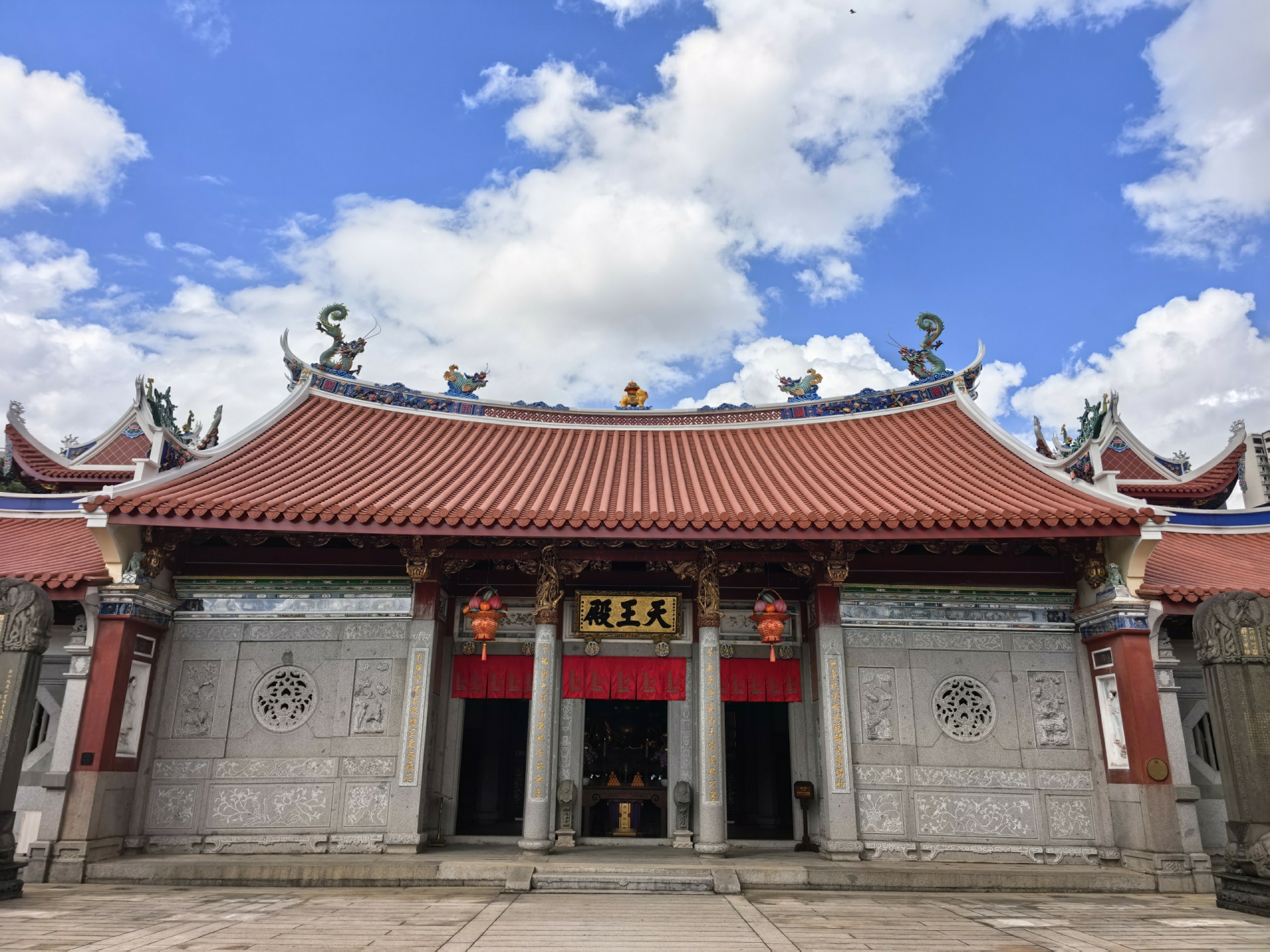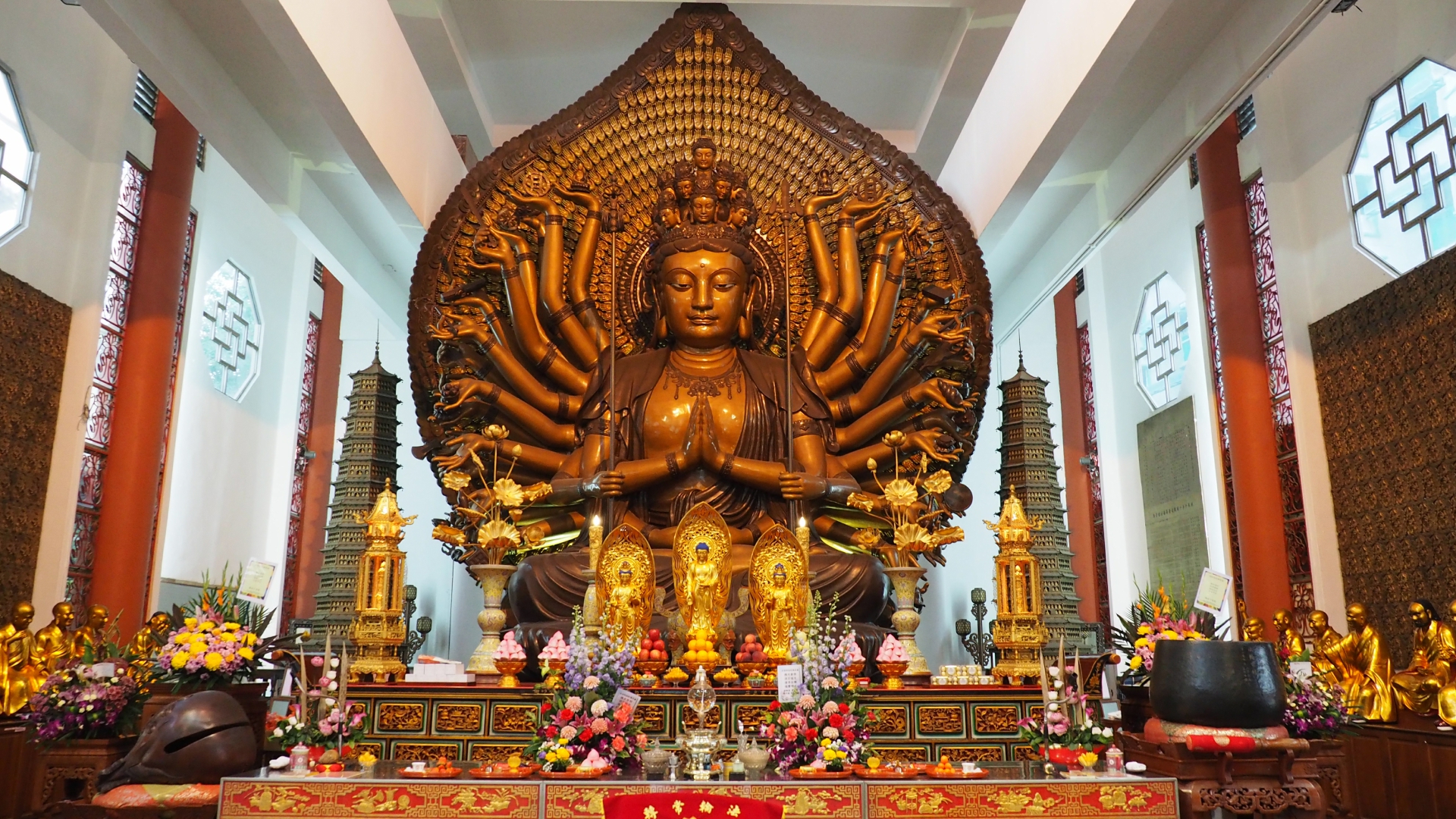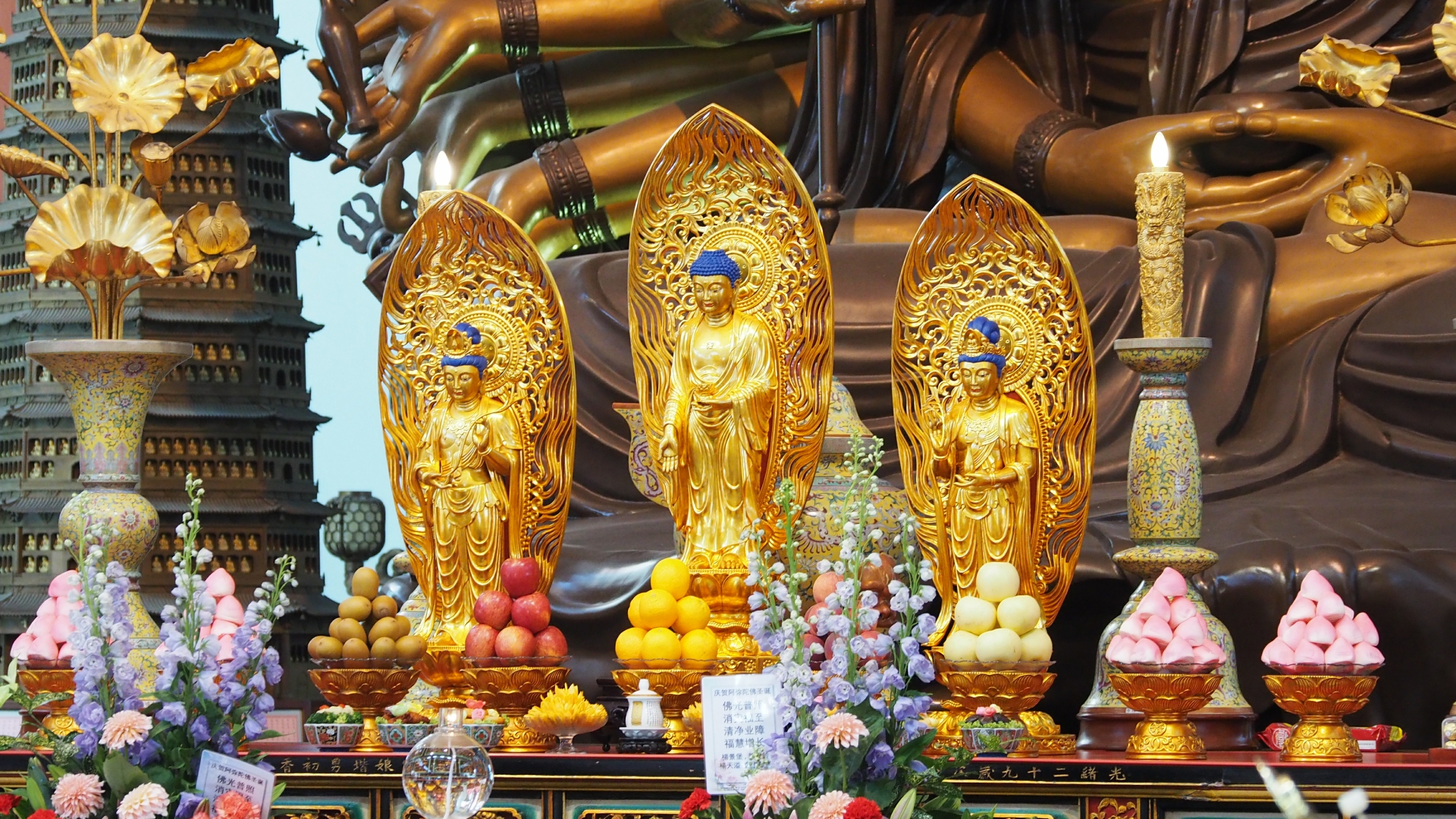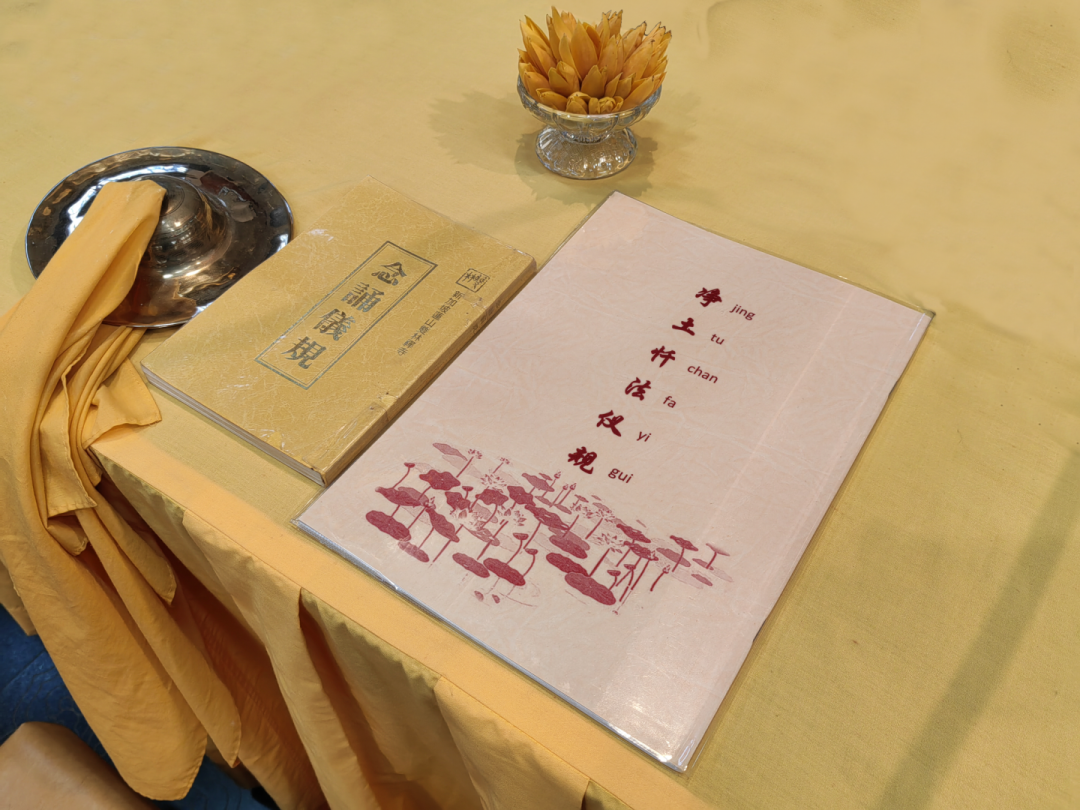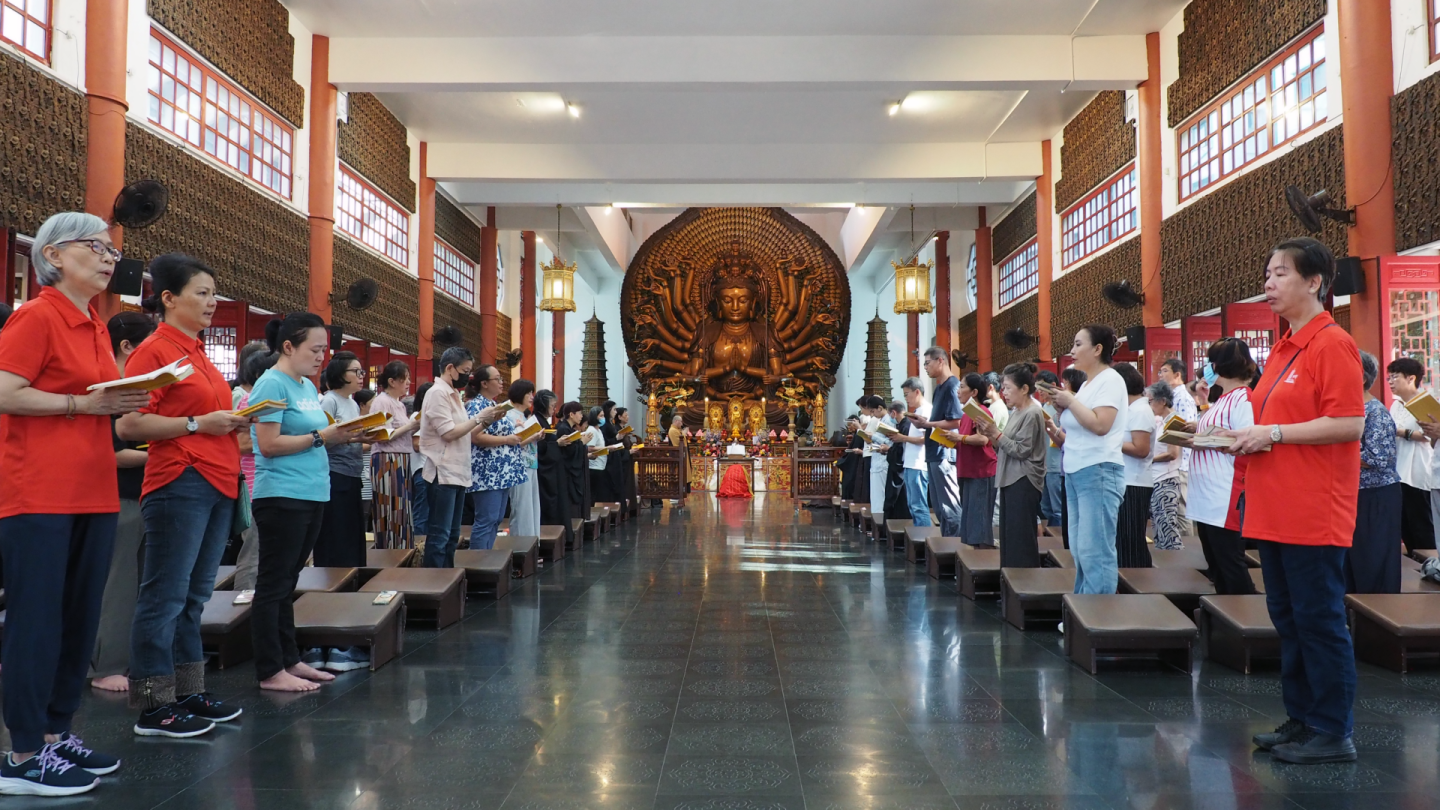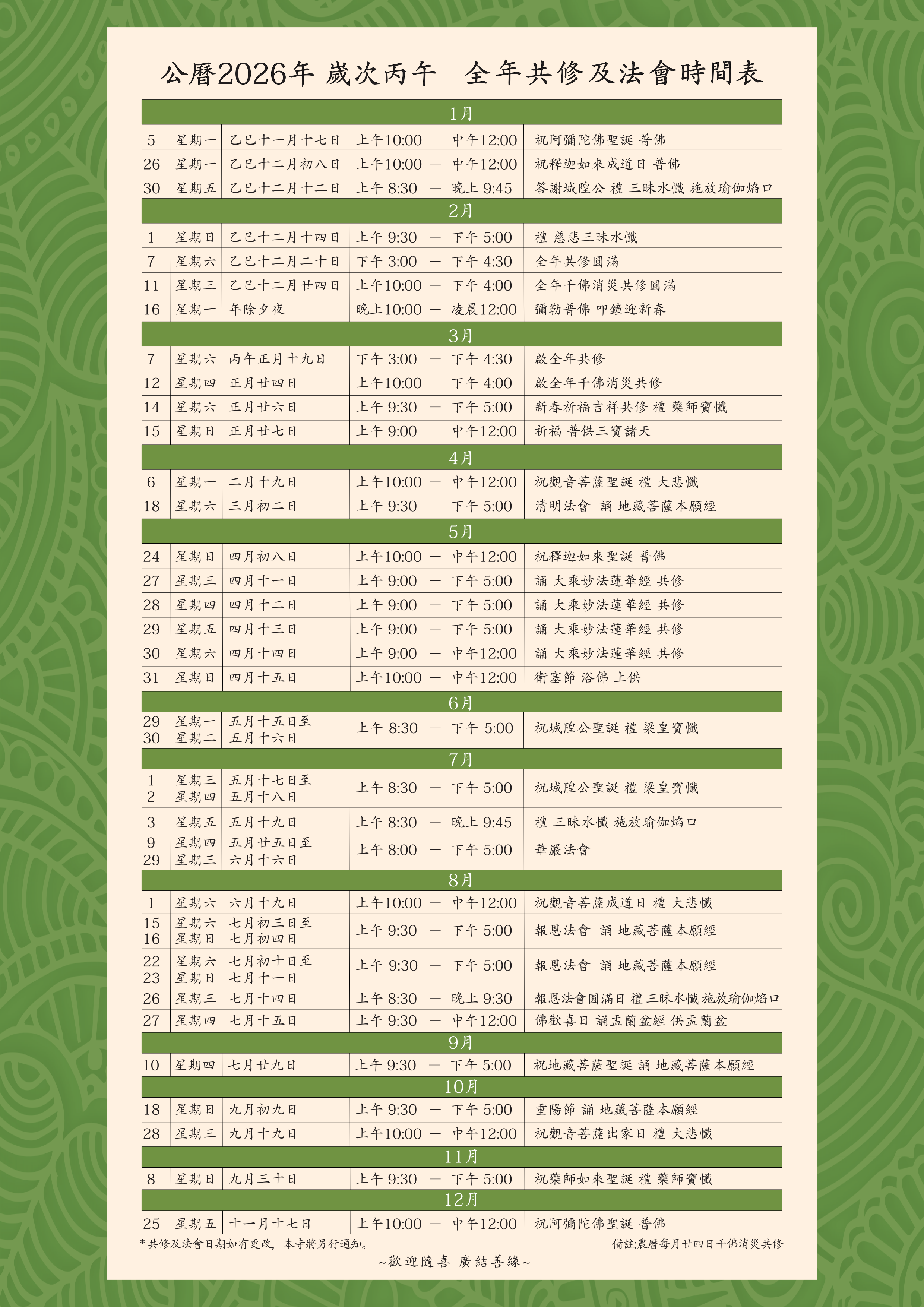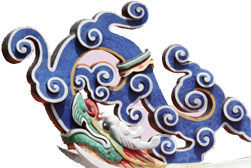
New halls added on the east and west wings
For two decades since its initial construction, the monastery’s halls had become so much out of repair, with termite infested pillars and damaged walls. In 1918, Master Pu Ling initiated a restoration work. The project eventually materialized in March, and took one and a half year to complete with the help of Low Kim Pong’s son, Mr. Low Kim Seong and many devotees of the monastery. To mark the completion of this restoration, two stone steles were erected in 1920. The inscription that narrated the monastery’s origin, the remarkable circumstances faced by the restoration team, and an introduction of former abbots, donors and monastic halls was penned by Mr. Khoo Seok Wan, a celebrated scholar then in Singapore.
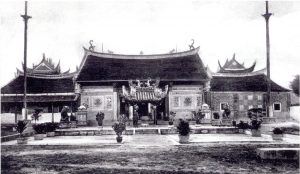
Hall of the Celestial Hall in the early period
In 1935, the monastery halls and buildings underwent another restoration with minor renovation works and paintings. In 1939, many Chinese volunteered to leave Nanyang for China to offer their services as drivers and mechanics. The Nanyang Federation in Singapore was entrusted with the task of recruiting and training them. Shuang Lin Monastery was made the registration office while Master Pu Liang helped to train these volunteers. In 1944, Master stepped down as 10th abbot after 27 years of service since 1917. He was succeeded by Master Song Hui. When the latter died in 1948, Master Gao Can, a well-known martial arts teacher and Chinese physician, was appointed 12th abbot of the monastery. Master Gao Can undertook post-war repairs as some of the buildings had been badly damaged in 1950.


